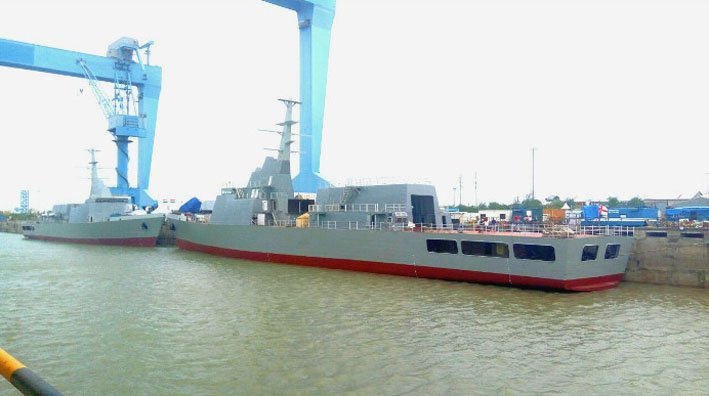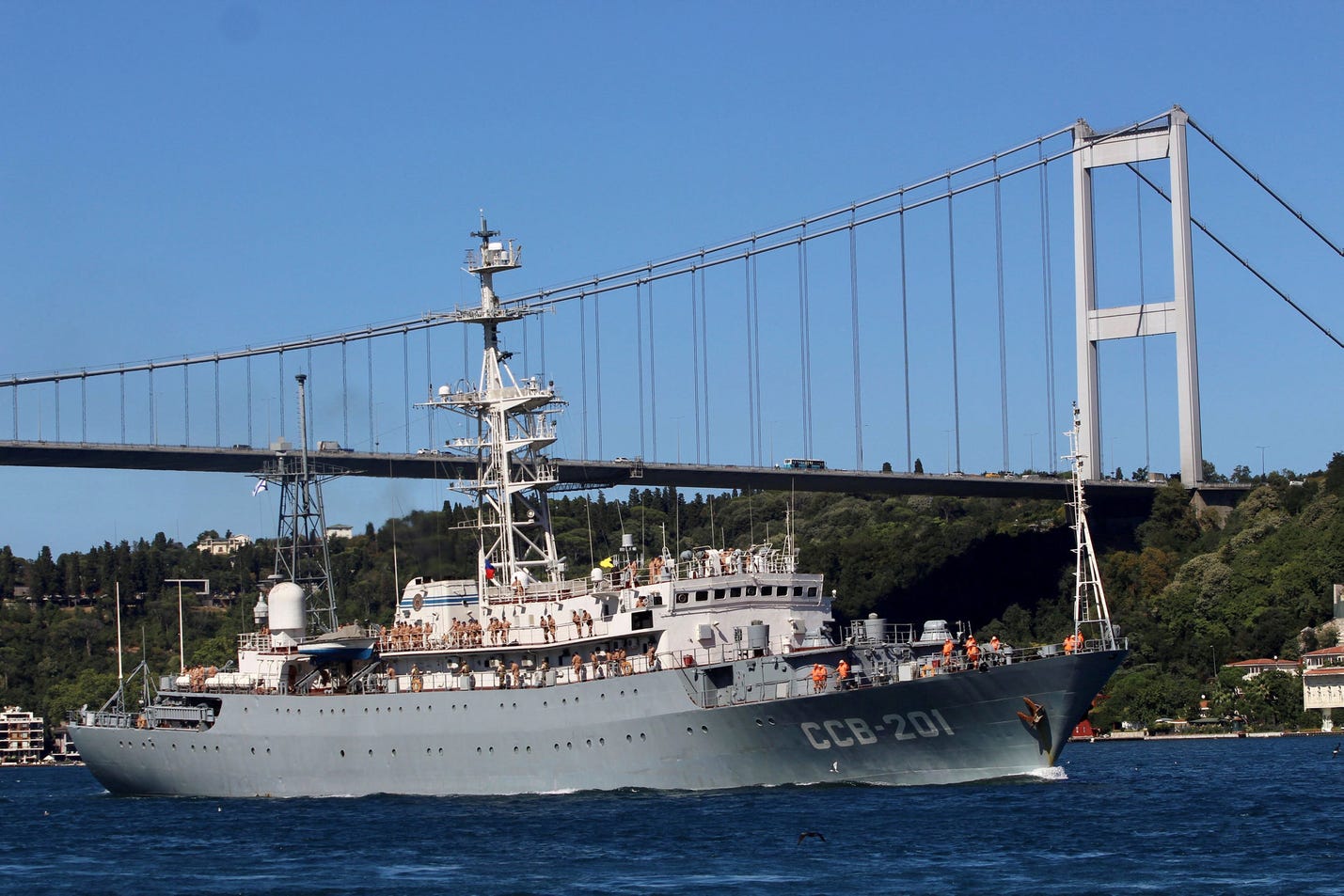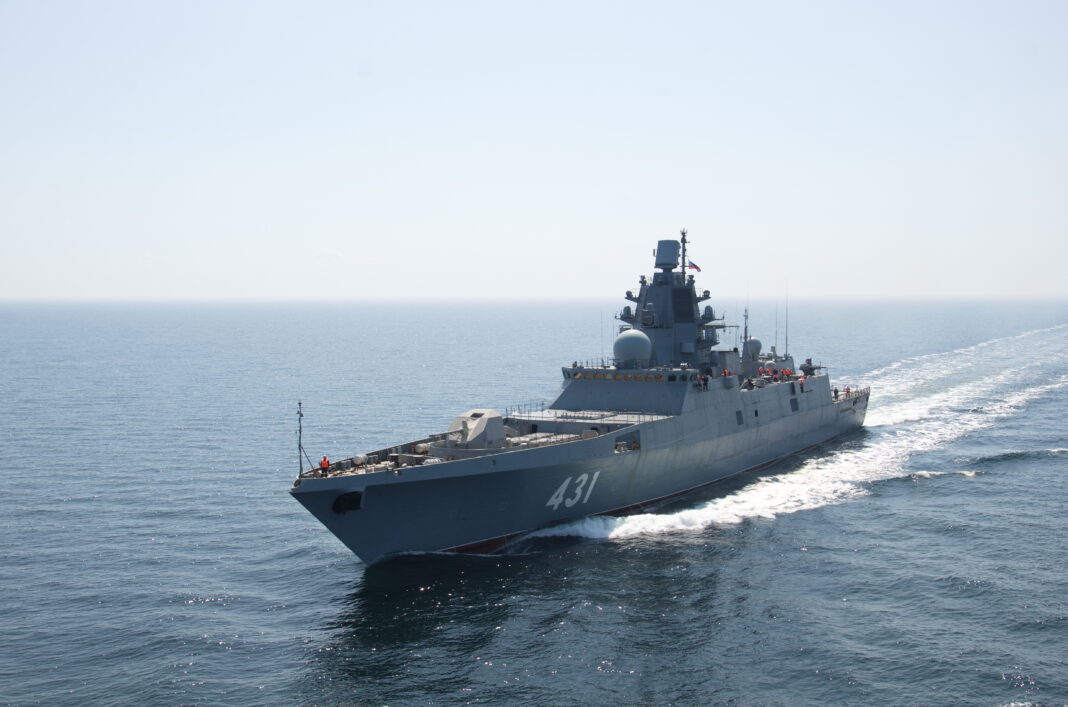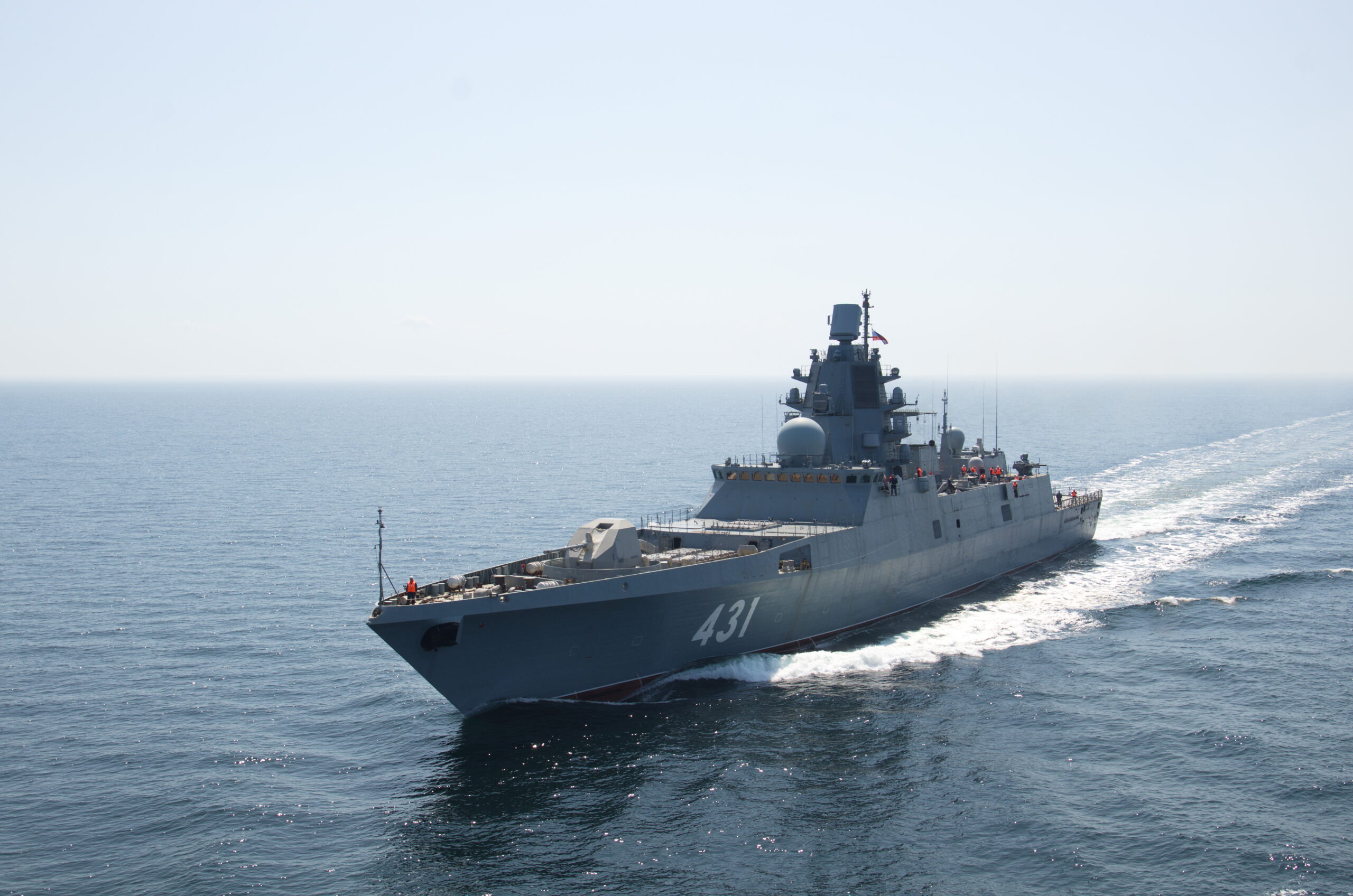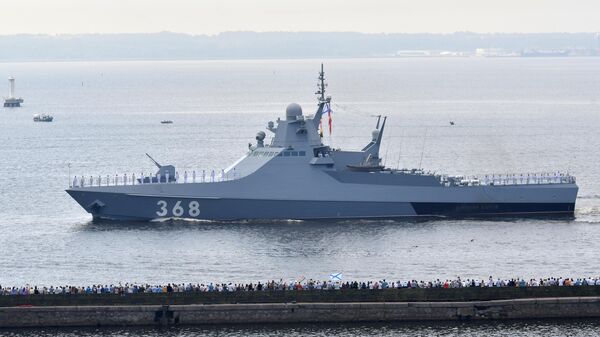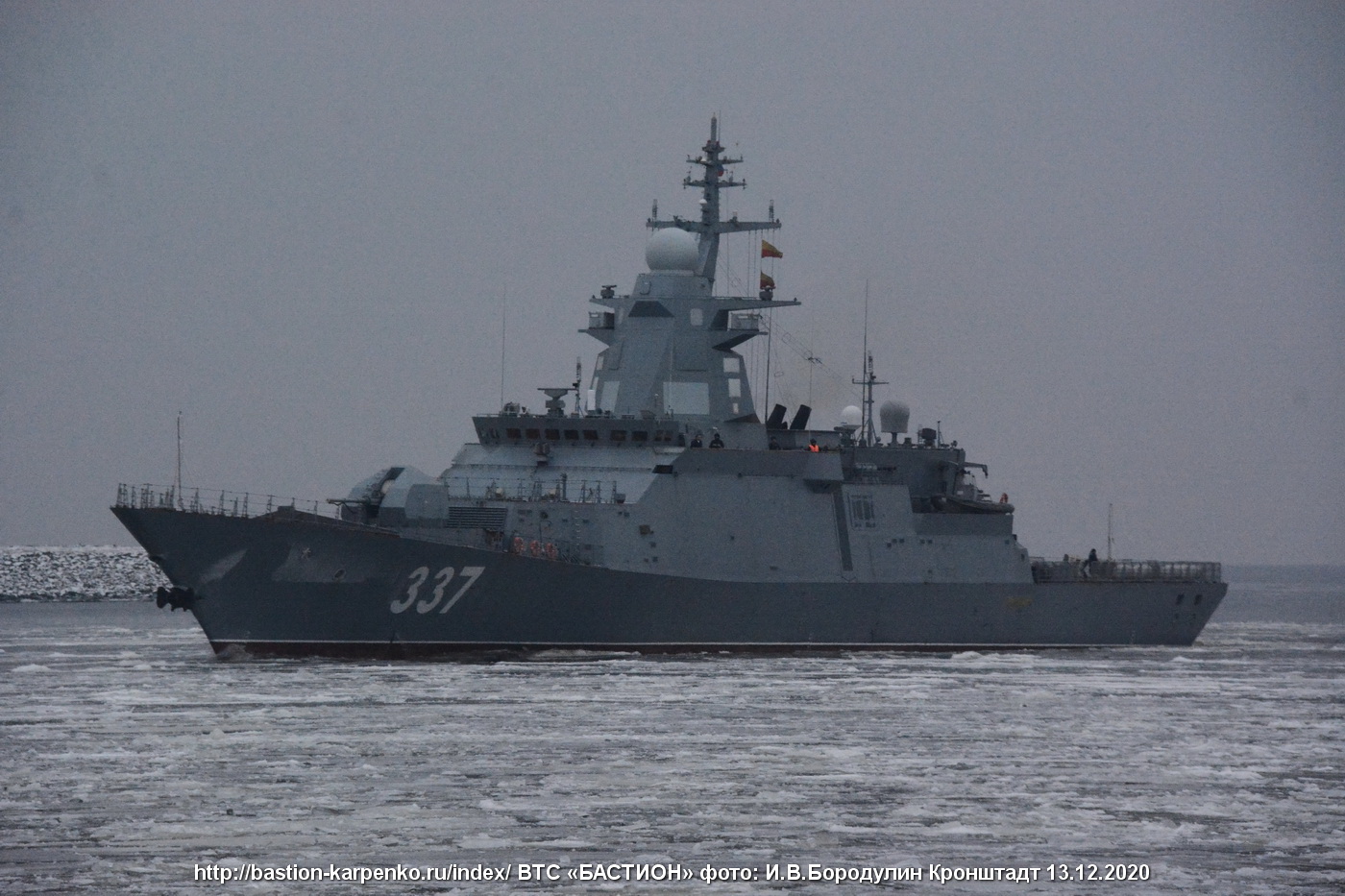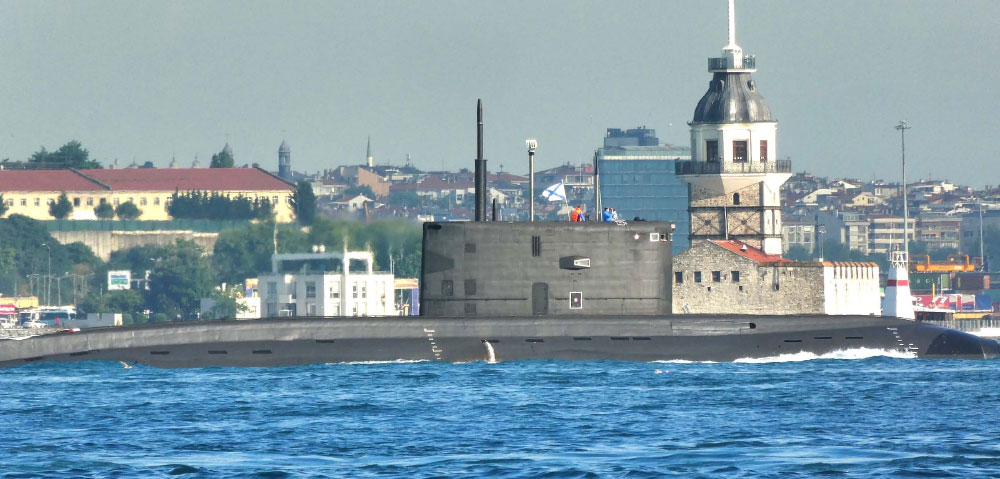
Project 877 Paltus (Kilo) Class
The work on Project 877 class submarines started in 1975 by the Rubin construction bureau, with the chief designer Yuri N. KORMILITSIN who created a single shafted double hulled submarine.
The submarine retained the double hull configuration and the bow mounted diving planes like previous Soviet combat submarines. The design provided the submarine with a reserve buoyancy of 32% which allows it to remain afloat even if one of the submarine’s six compartments and adjunct ballast tanks are flooded.
The construction of the first unit B-248 started in Komsomol’sk Shipyard in Far East region of Russia in 1979. She was launched in 1980 and commissioned in 1982. Two other shipyards, the Admiralty in Leningrad and Krasnoye Sormovo Shipyard in Gorky also so constructed Project 877 submarines.
Project 877 class submarines, designated as Paltus by Russian Navy and Kilo by NATO, were envisioned from the start to be used widely by the navies of the Warsaw Pact. These submarines were supposed to replace the older generation of Whiskey, Tango and Romeo class submarines. Thus, Project 877 class submarines were given the Russian nickname Varshavyanka, the woman from Warsaw.
While the Komsomol’sk shipyard produced submarines for the Russian Navy the other two shipyards made vessels for foreign use designated as Project 877EKM.
Between 1980 and 1994 18 Project 887 class submarines were built for the Russian Federation of which 10 are still in service.
India was the first export customer for this class of submarine. India received 10 Project 877EKM versions between 1986 and 2000. One was lost due to an accident and one was sold to Mynamar in 2020 and the remaining 8 are still in service.
877E versions were exported, one to Poland in 1986 and one to Romania in 1985. While the Polish vessel is still in service the Romanian has been inactive since 1995.
Algeria bought two Project 877EKM submarines to replace the older Romeo Class Submarines in service. The Kilo class submarines were commissioned between 1996 -1997.
China ordered four Kilo class submarines in 1993. The first two hulls were built as Project 877EKM for a former Warsaw Pact country and were subsequently canceled. The remainder are Project 636 hulls.
Iran ordered Three Project 877EKM submarines from the Russian Federation in 1988. These vessels were commissioned between 1992 and 1996. The operational effectiveness of these submarines were adversely affected by battery cooling problems as they were designed for colder waters around Russia rather than warm waters where the Iranian Navy operates. A major refit in the 2010’s was reported to have solved these problems.
The Submarines are 72.60 meters long and 9.90 meters wide and have 2,325 tons of displacement on the surface and 3,076 tons submerged. The propulsion is suspended to reduce noise. The enveloped volume of the submarine is 4,200 m3. The vessels have a reported maximum diving depth of 300 meters and a normal depth of 240 meters with a periscope depth of 17.5 meters.
The submarine’s propulsion plant has two Type 4-2DL42M diesel generator sets that power an electric motor. Only the electric motor is connected to the single shaft with one six-bladed propeller. The power plant can propel the submarine up to 10 knots on the surface and 17 knots submerged. In addition, two small auxiliary motors generating150Kw are fitted and a low powered electric motor of 95KW to run economically and slow speed operations up to 6 knots in ultra-quite mode. While submerged Project 877 class submarines can travel up to 400 nautical miles at a speed of 3 knots if the air conditioning system is not turned on. Two battery groups with each 120 cells provide 9,700 kWh at 100 Amp. One Project 877VD submarine in the Russian Black Sea Fleet namely the Alrosa has pump-jet propulsion.
The sonar suite compromising hull mounted low and medium frequency passive search and attack sonar MGK-400EM and hull mounted high frequency active search and attack sonar MG-519 Arfa, MG-553 sound velocity measuring, MG-512 cavitation detection and MG-53 sonar intercept units.
The bow sonar can detect a submarine target at 11+ nautical miles, a surface vessel at 43 nautical miles and a task force at 80 to 100 nautical miles.
The Project 877 Submarines have the MVU-110 combat management system. This system can conduct two simultaneous attacks while tracking 3 additional targets manually. The MVU-110 CMS weigh about 2,800 kilograms and have a volume of 3.5 m3 while the power consumption is 3kW. The system has two single operator consoles, one with sonar display and the other with switches and buttons. The weapon control system can track two targets automatically simultaneously with ballistic data entered manually and the ballistic solution produced automatically.
The standard armament comprises a mixture of TEST-71ME, TEST-71/96 wire guided ASW active and passive homing; Type 53-65 and SET-53 ASV passive wake homing; E53-56B acoustic homing torpedoes. The Type 877 vessels can carry a total of 18 torpedoes.
Project 636 (Improved Kilo) Class
Initially Project 636 was intended only for the Soviet Navy but since 1993 these submarines have been available to foreign users. Project 636 is also known as the Improved Kilo Class since the design of the vessels is based on Project 877. But the differences are significant. In order to further quiet this particular submarine, the bow has been reshaped and some auxiliary machinery was moved to the aft of the submarine. Furthermore, these vessels are covered with anechoic tiles on the outer hull. Because of their quietness, these submarines have been marketed as “Black Holes”.
China was the first export customer for the Project 636 class. When China ordered 4 Project 877 vessels from the Russian Federation in 1993, Russia only delivered two submarines in Project 877 configuration. The remaining two were of Improved Kilo class. China additionally ordered a further 8 submarines in 2002 bringing the total number of Kilo class submarines in PLAN (People’s Liberation Army Navy) service to 12.
Algeria has one of the most powerful submarine fleets in Africa. This country ordered 4 Improved Kilo class submarines in addition to the two existing Kilo Class Submarines. The last submarine Hoggar was delivered in January 2019.
Vietnam ordered 6 submarines to counter Chinese naval activities in 2009. These submarines were delivered between 2013 and 2017. They are assigned to the 189th Brigade based in Cam Ranh.
The largest operator of the Improved Kilo class submarines is the Russian Navy with 14 submarines in service and a further 5 under construction. The first submarines are Project 636 and the remainder are Project 636.3 variants. The main difference between these two variants is the later can fire the land attack version of the Kalibr class missiles. Which is an important power projection capability for the Russian Navy. The first Type 636.3 submarine to fire a Kalibr missile was Rostov-On-Don, which attacked positions occupied by Daesh on 9 December 2015 while stationed in the Mediterranean.
The length of the pressure hull of the Project 636 vessels is 53 meters, 1.2 meters longer compared to Kilo class. The overall thickness of the pressure hull is 24-27 mm and there are three 614mm diameter access hatches. The diameter of the pressure hull is 7.2 meters.
The lengthening of the pressure hull naturally increased the overall length. Improved Kilo class submarines are 73.80 meters long overall, 9.90 meters wide. They have 2,350 tons of displacement when surfaced and 3,126 tons when submerged. Improved Kilo Class Submarines have more powerful electric motors which increase the underwater speed to 19 knots. The electric motor is mounted on a flexible raft and the maximum shaft turn per minute has been halved to 250 rpm, vastly improving the sound reduction.
Like the Kilo class the Improved Kilo class has six 533mm torpedo tubes. The standard armament comprises a mixture of TEST-71ME, TEST-71/96 wire guided ASW active and passive homing; Type 53-65 and SET-53 ASV passive wake homing; E53-56B acoustic homing torpedoes. One important addition to the arsenal of these submarines are the Kalibr class submarine launched anti-ship and land attack cruise missiles.
As mentioned before, the Russian Navy units can carry and fire the Novator 3M-54 (SS-N-27 Sizzler) submarine launched anti-ship missile and Novator 3M-14 (SS-N-30) submarine launched land attack versions of the Kalibr family of missiles. Novator 3M-54 has a length of 8.22 meters with a 200 kg warhead and a range up to 660 km. Novator 3M-14 variant is 6.2 meters long and this missile can deliver its 450 kg warhead up to a 2,500 km range.
Improved Kilo class submarines in other navies can carry Novator 3M-54E missile variants. The 3M-54E missile is 8.2 meters long with a 200 kg warhead. They can deliver their payload up to 220 km with a speed of 2.9 Mach at the final stage. The 3M-54E1 variant is shorter at only 6.2 meters long with a payload of 200kg. The subsonic missile can travel up to 0.8 Mach with a 300 km range.
Both Kilo and Improved Kilo class submarines have short range shoulder fired anti air missiles either SA-N-5 or SA-N-8 on board. Up to 8 missiles are stored in a well located at the fin.
One can argue that Kilo / Improved Kilo class submarines are one of the best-selling diesel electric submarines with 58 units in service around the world. When their design began the aim was to export these submarines. The current spread of these vessels may have surpassed the imagination of its designers
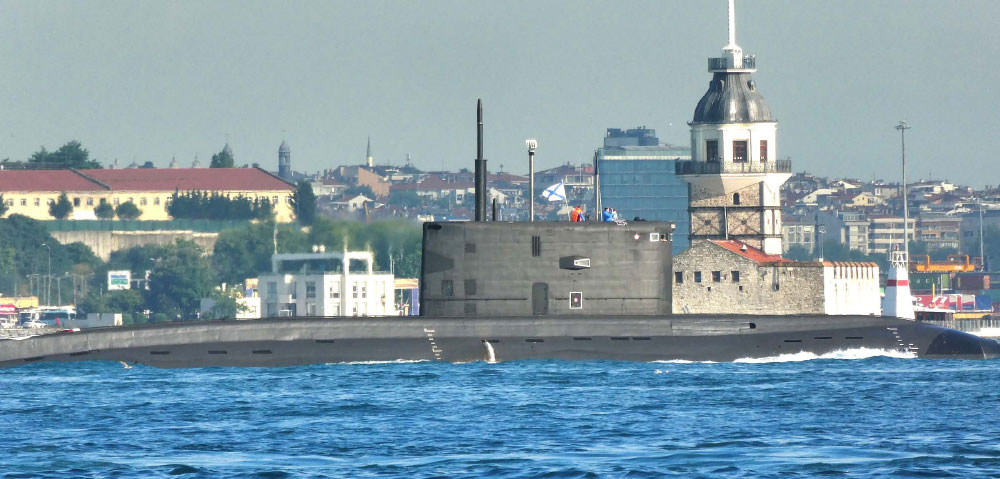
Project 877 & Project 636 Class Russian Submarines
 www.defenceturkey.com
www.defenceturkey.com





